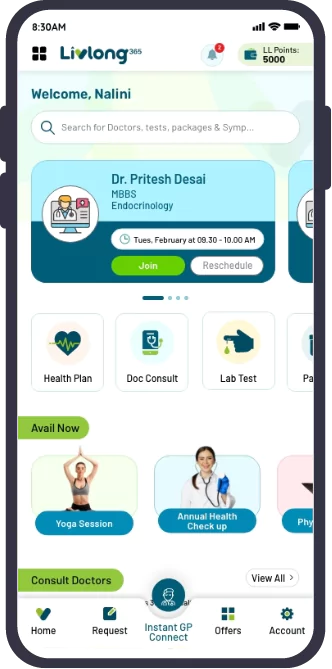What is HRCT?
High-resolution computed tomography (HRCT) is a cross-sectional scanning method used to diagnose and anticipate a variety of medical conditions, the most prevalent of which are lung diseases. Although the imaging variables used for HRCT may change, it is typically carried out using a standard CT scanner.
Previously, CT scanning was performed using a different method, and many obstacles were faced to get an accurate presentation with a good quality of the image. Modern CT scans, on the other hand, are extremely effective and feature a wide variety of imaging resolutions. HRCT test is used to evaluate the conditions of the lung and to look for unusual growth in the lungs as well as obstructions to airflow across the lungs.
Uses of HRCT
The uses of HRCT scans are as follows:
- To evaluate lung health and the likelihood of acquiring a widespread lung disease
- To check the lungs for any suspicious growth (tumour)
- To find lungs that have airflow blockages
- To choose the ideal site for a lung biopsy
- To diagnose tumours in bones, fractured bones, and muscle disorders
- To detect some pulmonary disorders and sinus problems
- To locate exact locations of tumours, infections, blood clots, internal injuries, or internal bleeding
- To guide procedures like biopsies, surgeries, and radiation therapy
- To check for bone diseases
- To examine structures and check-up various body organs regularly
HRCT scans are also capable of scanning different organs. The different types of HRCT used for different body parts include:
- CT Scan of the Heart and Lungs
- CT scan of the thoracic and lumbar spine
- Cognitive CT scan
- CT angiography (provides detailed pictures of tissues as well as blood arteries located in different areas of the body)
- Enterography using CT (a diagnostic imaging procedure used to visualise the small intestine using CT images and a contrast agent).
HRCT scan procedure
The procedure of HRCT scanning is a painless and safe. Depending on the type of the operation, the patient must lie facing upward or downward on a movable scan platform that passes through an open circular device, which produces cross-sectional, high-quality X-rays. For an accurate evaluation of various body organs, the patient may occasionally receive an injection of the dye to highlight the organs.
What to expect after the HRCT scan?
The patient can carry on with their regular activities following a HRCT scan. Patients who are told to fast before the procedure are allowed to eat once it’s done. A radiologist generates the reports, and the doctor shares the findings and diagnosis with their patients. Usually, the reports are accessible within 24 hours following the HRCT scan.
HRCT scan in pulmonary diseases and COVID-19
There are different forms of lung disorders; thus, HRCT scans are highly helpful in the proper diagnosis of multiple disorders. HRCT testing offers important information that is difficult to obtain only through medical records and other procedures. It guarantees precision in determining the cause or prognosis of illnesses. It covers all the key and acute signs of disease development and makes it simple to determine how diseases advance.
The swab approach is preferred by many medical facilities for detecting the COVID-19 and some other infections. Nevertheless, a study published in the American Journal of Roentgenology found that the diagnosis of COVID-19 made using a HRCT scan is generally reliable, with a 4% margin for error. People’s choices for diagnosis may vary, but HRCT has remained a key tool in the diagnosis of COVID-19.








